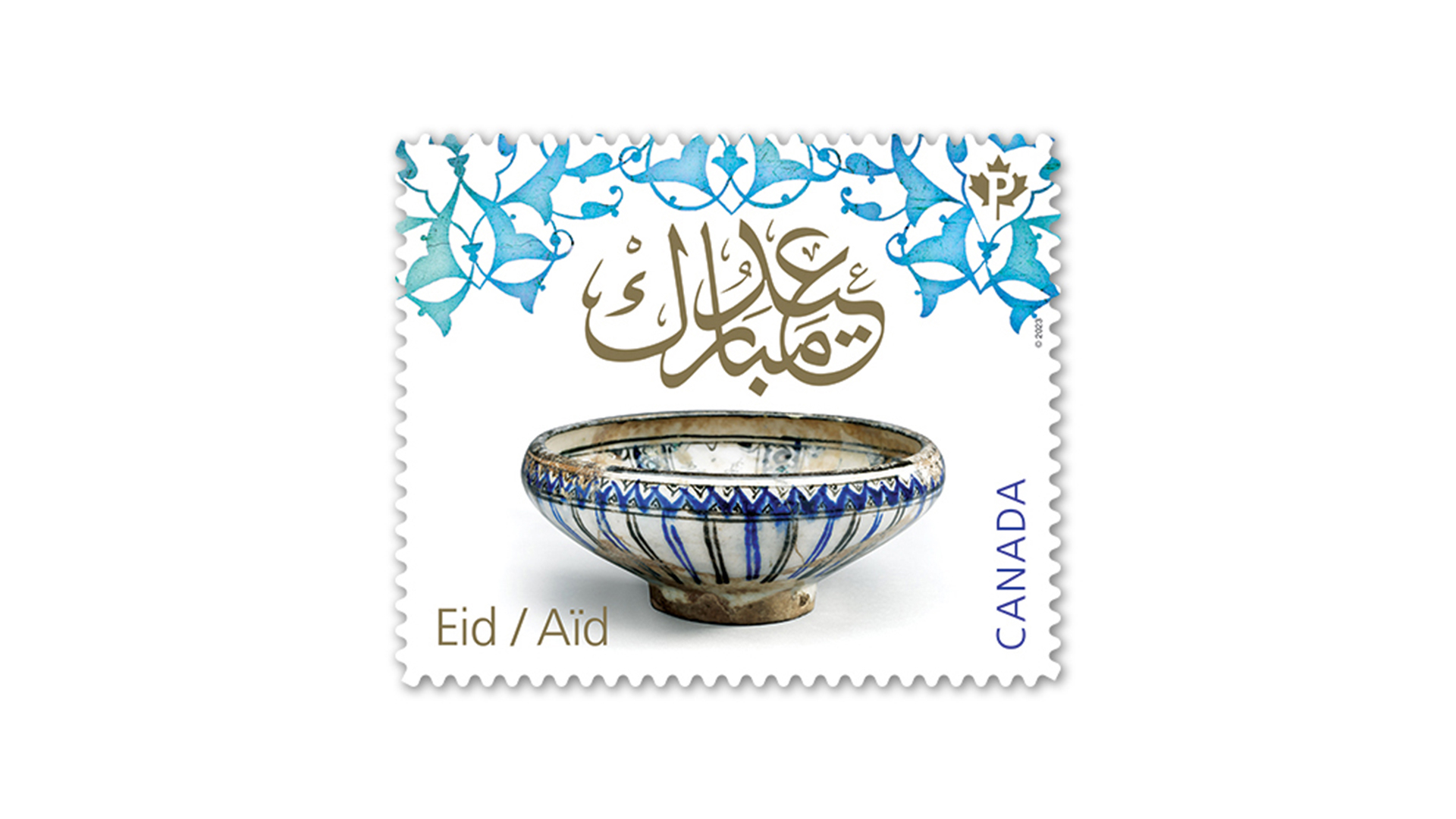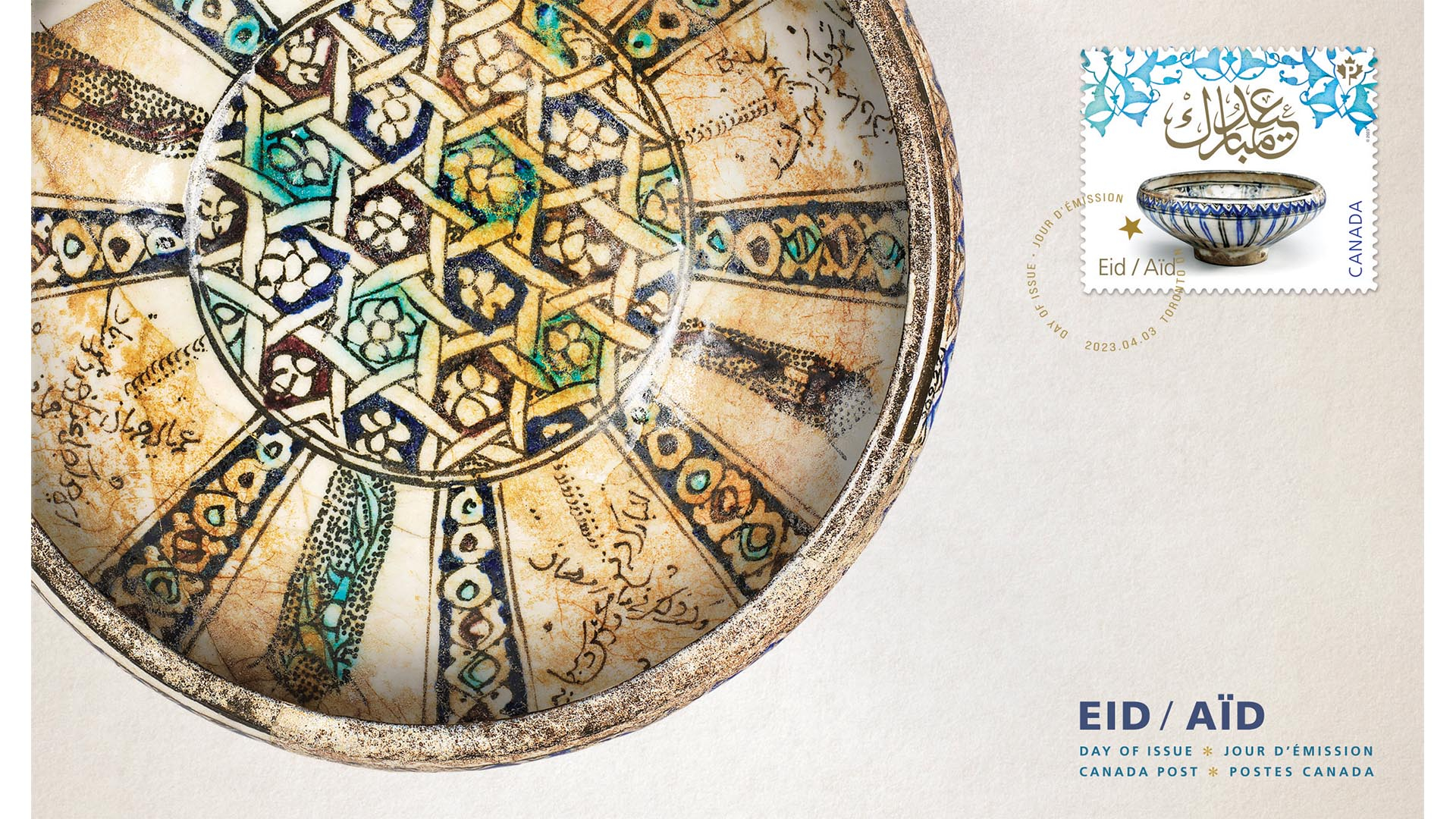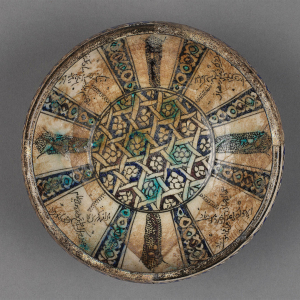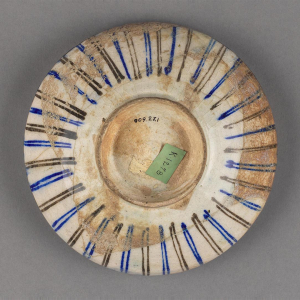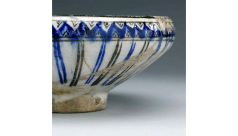Canada Post puts 14th-century bowl on a new stamp to mark Eid festivals.
Marking the end of Ramadan, Eid-al-Fitr (“Festival of Fast Breaking”) is a holiday celebrated by Muslims across the world at the end of a month of fasting from sunrise to sunset each day. Ramadan is deemed a particularly holy month in the Islamic calendar as Muslims believe that the Prophet Muhammad received the first revelation of the Quran through the Archangel Gabriel during this month. Hence, Muslims take the time for extra spiritual introspection, communal prayer, and charitable acts during Ramadan.
As people mail holiday cards in celebration of Eid-al-Fitr, Canada Post has released a new stamp to mark the festival featuring a very special bowl from ROM's collection.
This hand painted ceramic bowl (ROM 909.27.1) was made in 1329 CE in Iran, during the Mongol Ilkhanid period. Made with a stonepaste body of ground quartz, glass, and clay, it is painted in cobalt blue, turquoise, purple, and black pigments under a transparent, colourless glaze. The bowl is inscribed on the inside with a blessing for its owner and the date of production, during Ramadan AH 729 of the Islamic calendar, equivalent to July 1329.
Maker's name unrecorded. Iran, Ramadan 729 AH / July 1329. Ceramic (stonepaste), with cobalt-blue, chromium-black, copper-turquoise and manganese-purple, and colourless alkali glaze. ROM 909.27.1.
The main decoration features a central interlaced design filled in with six-petalled flowers. Alternating stippled and colourful bands decorated with circular shapes radiate from the centre and enclose four panels of poetic inscriptions in Persian translated as:
O Master! May you possess reason,
wisdom and intellect
May you forget all the sorrows of this world
Whenever your appetite draws you towards food
May you enjoy whatever you eat from this bowl
May the high heavens be in your favour
May you be protected from the harm of the evil eye
And that was written in the blessed month
of Ramadan of the year 729 [July 1329 CE]
There is a deep sense of humanity in this bowl that still rings true. The poem urges us to take a moment to forget our sorrows and be grateful for what we have and wishes us protection with a bit of luck. Blues are auspicious in Islam so even the colours the artist chose were meant to uplift the soul.
The bowl was purchased in 1909 by ROM’s founder, Charles T. Currelly, from a reputable Armenian dealer in Paris. Currelly paid a sizeable sum for this artefact, as he recognized its significance and connection to Ramadan. Little did Currelly know, that his carefully conceived purchase would one day grace a national stamp! The ROM opened its doors to the public in 1914 and the bowl has been cared for and displayed in its galleries ever since—come and see it at ROM’s Wirth Gallery of the Middle East soon.

